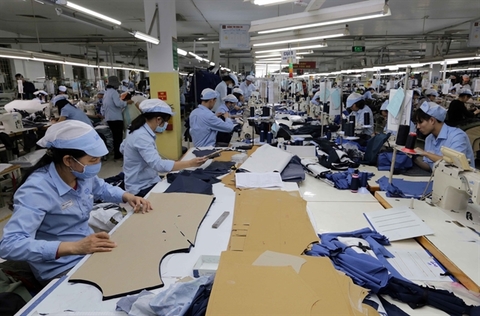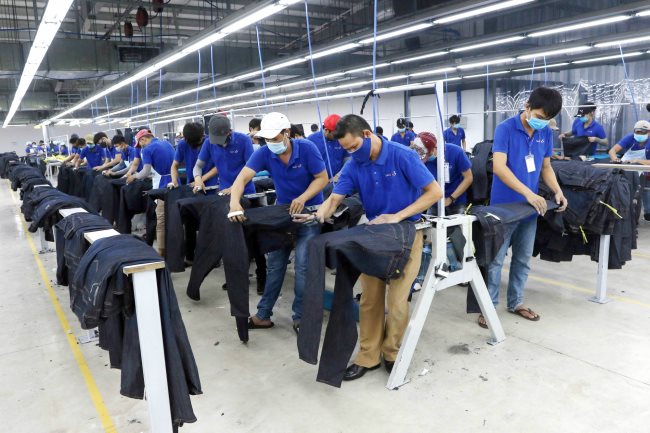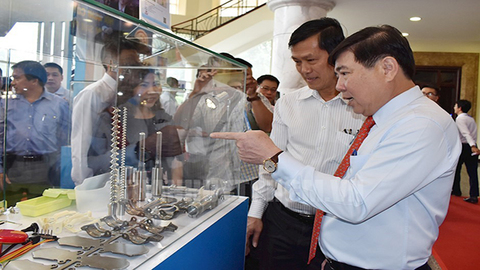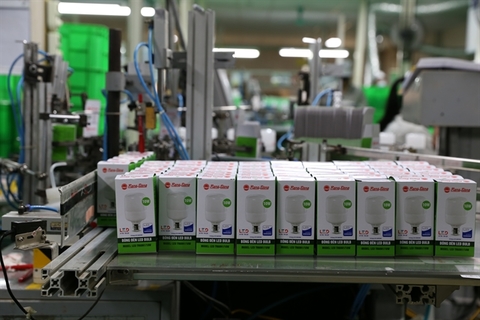Garment and footwear firms will have to wait for EVFTA benefits
Garment and footwear firms will have to wait for EVFTA benefits
Textile, garment and footwear products made in Viet Nam will not enjoy immediate tariff cuts after the EU-Viet Nam Free Trade Agreement (EVFTA) comes into effect, according to a report from Bao Viet Securities Joint Stock Company (BVSC).

After the EVFTA comes into effect, Most Favoured Nation (MFN) tariffs will automatically replace the Generalised System of Preferences (GSP) rates which the EU has applied for developing and underdeveloped countries.
This means for the first few years of EVFTA's implementation, most local garment and footwear products will not benefit from the EVFTA because MFN rates for those products are higher than GSP rates of 9 per cent for garment products and 3-4 per cent for footwear products at present.
Specifically, most apparel products that Viet Nam has been exporting to the EU will see export tariffs eliminated gradually from the MFN tariffs of 12 per cent to zero in 3-7 years after the EVFTA comes into effect. Similarly, footwear products will be exempt from MFN tariffs of 12.4 per cent in 3-7 years.
Those that will enjoy the immediate tariff cut are products which are not Viet Nam's major exports to the EU such as fibre to make clothes and other materials to produce footwear.
In the footwear sector, the EU has pledged to eliminate 37 per cent of tariff lines for local footwear products exported to the EU as soon as the FTA enters into force. They include rubber/plastic waterproof shoes, slippers, raw materials and accessories.
However, when the tax cuts take effect, Vietnamese footwear, textile and apparel enterprises will benefit significantly from EVFTA because the tariff preferences under the EVFTA are stable, while GSP tariffs are volatile and can be changed annually, according to the BVSC report.
Besides, most countries that export textile and garments to the EU don't have FTAs with the EU, so if Vietnamese enterprises meet origin requirements, the EVFTA will open a great opportunity for Viet Nam’s footwear, textile and garment exports.
Rules of origin
Under the deal, Viet Nam's footwear, textile and garment industries will have to make changes to meet origin conditions and take advantages of preferential tariffs.
For the textile and garment industry, fabrics used to make the products must originate from Viet Nam or the EU, and the cutting and sewing stages must be performed in either the bloc or Viet Nam.
Despite this, the EVFTA has some flexibility on product origin. For instance, local garment firms can use fabric imported from countries that have signed FTAs with the EU and Viet Nam, like the Republic of Korea (RoK).
Although the rules of origin in the EVFTA are not as strict as in the Comprehensive and Progressive Agreement for Trans-Pacific Partnership (CPTPP), Vietnamese firms still face several challenges because most of them have just engaged in cutting and sewing steps while not producing fabric and yarn.
In addition, main production materials (fabrics) that most Vietnamese textile enterprises use originate from mainland China and Taiwan, which do not have trade deals with the EU.
Therefore, according to BVSC, to gain full benefits from the EVFTA, Viet Nam must focus on developing the textile industry and the support industry for the textile and garment sector to supply enough materials for it.
Otherwise, Viet Nam will have to increase more fabric imports from the RoK to make use of the trade pact with the country, pending the supporting industry’s development. Under the EVFTA, companies can also import materials from Europe to improve their products’ quality and value.
Vu Duc Giang, chairman of Viet Nam Textile and Apparel Association, said Viet Nam had signed 16 FTAs with many countries and territories. Of which, 12 have come into effect and have boosted import-export turnover, with textile and garment a sector that takes full advantage of FTAs.
According to the EVFTA, industries such as textile, garment and footwear will benefit most with export revenue increasing by 13.49 billion euros (US$15.23 billion) by 2035.
Giang said the EVFTA promised apparel export potential of more than $100 billion annually.
The association believes the export target of $40 billion for 2019 is achievable, thanks in part to FTAs, including the one with the EU - the second biggest market for Vietnamese textile and garment products.

















